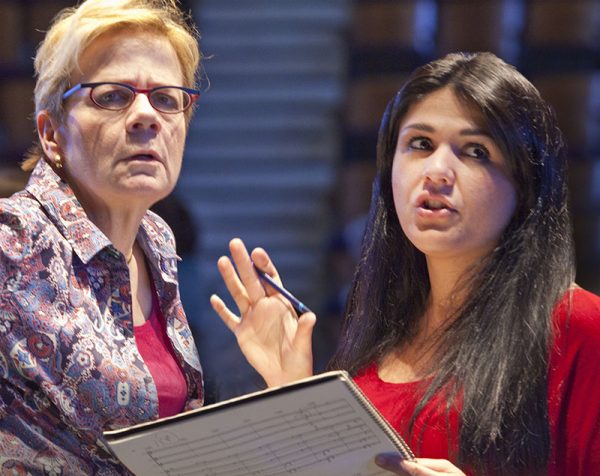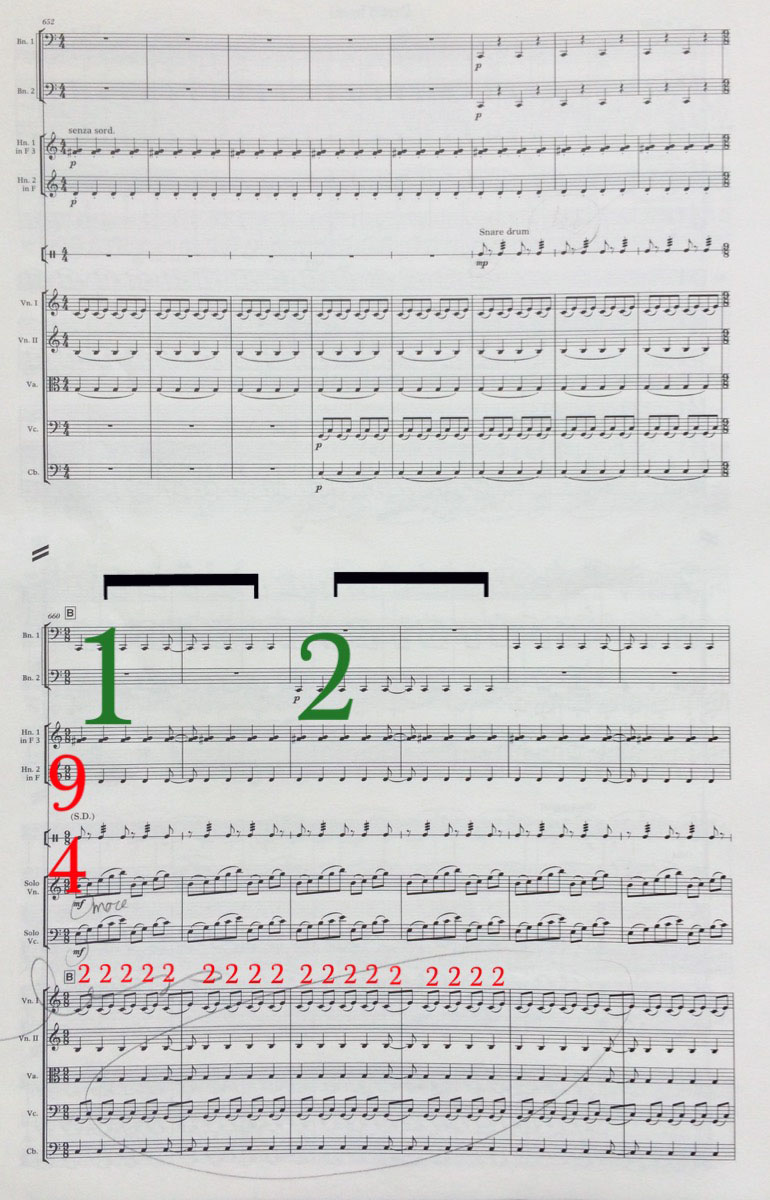By Alexandra Arrieche
For me, one of the most exciting aspects of being part of Cabrillo as the Assistant Conductor is the feeling of collaboration and amusement of discovery. It is different, on so many levels, than working with what people call “standard repertoire.” When we start the process of learning works by Brahms, Dvorak, Verdi… we have an entire baggage of tradition behind us, thousands of recordings, hundreds of conductors and orchestras that have already developed their own way to play some of those pieces, so the questions are answered for us.

2014 Cabrillo Festival. Photo by rr jones
When we work with new music, we are facing a fresh piece of art. No traditions behind, few recordings, sometimes no recordings at all! It is a whole new world to be discovered and dissected, and the questions that inevitably arise—How to conduct this bit? The other? In two? In 3? Is this note right?—become much more intense because we have so few references to rely on.
Using the example of Philip Glass Double Concerto (beautiful piece, by the way) we faced this exactly scenario.
In the third part – Letter B, for example, we have a 9/8 bar. The orchestra keeps a pulse on the quarter note. Because a 9/8 bar does not accommodate 5 quarters but 4 and 1/5, the second half overlaps the bar starting a new bar with “off beats” until we get together in the third bar. This process generates a cycle of two bars (it is actually much easier than it sounds). On the top of it we have the soloists playing a melody organized rhythmically in 2+3+2+2 (8th notes). When I first saw this part my feeling was different. For me it sounds 2+2+2+3. Also, I thought this would be much more helpful for the musicians than other possible combinations that conductors have to fill a 9/8 bar, specially 3+3+3.

But the solution I found still not quite right.
So, last week, I’ve got an email from Marin asking me how I solved this bar. I sent her my ideas and she sent me back her solution:
“Rebarring this part, transforming those two bars of 9/8 in one Bar of 9/4 – Perfect!!!
Once we have the same pulse for the entire orchestra it would be much easier and helpful if we put it together in one bar – No off beats – The orchestra is steady and the soloists are free!”

It seems so obvious now!!!
Philip Glass: Double Concerto for Violin and Cello (recording excerpt courtesy of Dunvagen Music)
As I said before, in “standard repertoire,” we have choices to make, but most of the time they are choices. Solutions have been pre-discovered, and we just have to choose which one. But here at Cabrillo Festival we are creating solutions and possibilities and this feeling of discovery we only have with the new music.
It is incomparable and it is really exciting!
—Alexandra Arrieche, Assistant Conductor
Philip Glass’ Double Concerto for Violin and Cello will be performed as part of the WISH YOU WERE HERE concert on Saturday, August 15, featuring Tim Fain (violin) and Matt Haimovitz (cello).
